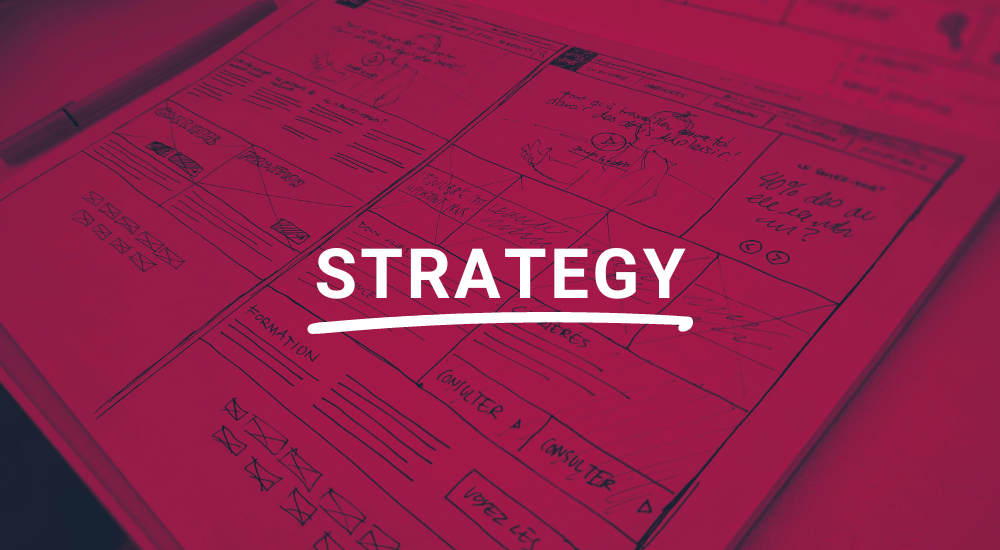In the first edition of the Brave New Leaders newsletter, I explored why human-centered ways of working, organizing, and managing/leading are required now, why you should care, and briefly introduced the principles of these new ways. In this second edition, I’ll dive deeper into these five principles.
principle /ˈprɪnsɪp(ə)l/ noun
- A fundamental truth or proposition that serves as the foundation for a system of belief or behavior or for a chain of reasoning.
- A rule or belief governing one’s behavior.
The premise of the DNA of Human-Centered Ways of Working is that adopting these principles will enable your organization to drive:
- Innovation & Creativity (at scale)
- Adaptability, Resilience & Learning
- Engagement, Energy & Passion
- Human, that is Employee & Customer Focus
- Growth Orientation
As Gary Hamel put it in “The Future of Management,” the ultimate goals are to:
- Build a company that is a nimble as change itself, dramatically accelerating the pace of strategic renewal and agility
- Make innovation everyone’s job, every day
- Create highly engaging work environments that inspire employees to give the very best of themselves
Driven by a Purpose
What does it mean?
Your organization and/or team has a clear mission and idea of what needs to be accomplished. Everything the organization and/or team does is focused on achieving that mission.
Ideally, the purpose or mission is defined from a human perspective and not in financial, business, or offering terms. Externally it’s guided by customers, users, partners, the ecosystem, and other stakeholders’ needs; internally by employees and other internal “user groups “. It’s about creating and delivering value for these, and it’s focused on outcomes from a human perspective that will have an impact.
Now, I’m not necessarily talking about a “save the planet” kind of purpose. If that’s your thing, sure, go for it. But purpose can be much more straightforward. Like for example, for a help desk: “Solve users’ issues on the first call “or for order fulfillment: “Deliver 100% of customer orders on time” or for HR: “Ease the onboarding process so that employees feel operational within 1 day “or for Risk: “Simplify the KYC process as much as possible and reduce the burden for our customers to a minimum “. The ultimate goal should be to delight your customers and users.
As Peter Drucker said already 50 years ago: “What [the customer] considers ‘value’ is decisive — it determines what a business is, what it produces and whether it will prosper”.
Why is it important?
- The function of having a purpose is to coordinate and align efforts on a common, compelling goal. Even in uncertain conditions, it provides strategic clarity.
- A human-focused purpose, instead of financial targets or a rigid business definition, for example, enables your organization to adapt more easily to changing needs. It fosters innovation and transformation as to how impact can be increased.
- A shared purpose that defines success through the eyes of customers, stakeholders, and society taps into our basic human need to be part of something larger than ourselves and thus can motivate people to succeed.
- Research has also shown that companies with a clear purpose, which was widely understood throughout the organization, benefit from higher growth rates.
- Keeping it simple and tangible will make it easier for employees to relate to it.
- In light of the great resignation: studies show that as much as 82% of employees feel that purpose is important. Another study of 20,000 employees showed that when leaders are clear about purpose, employees are about 100% more likely to stay in the organization!
Focused on Progress
What does it mean?
Focusing on progress means being action-oriented and continuously delivering outcomes. It means getting sh*! done, fast, in short cycles, which allow for rapid feedback from customers, employees, users, stakeholders, … as to whether you’re creating value and having an impact or not.
Focusing on progress also means continuous iteration and learning through action, enabling you to adapt and continuously improve.
It requires an experimentation and “safe to try” mindset, limited work in progress that teams can focus on without interruptions, and limited handoffs.
“Do less. More often.”
— Gothelf & Seiden
All this DOES NOT mean “good enough is good enough”. It means delighting your customers with the progress you’re making.
Why is it important?
- In a complex and ambiguous environment, where everything is changing all the time, you can’t analyze and plan. Such environments require us to act and probe, in other words, to experiment. (See, for example, Dave Snowden’s Cynefin framework or Gothelf and Seiden’s Sense & Respond)
- Working in small batches allows you to see whether you’re making progress or not easily, and it will enable you to adjust to changes rapidly.
- Rapid and frequent user feedback allows for evidence-based and data-driven decision-making.
A Collaborative Mindset
What does it mean?
The myth of the lone genius and innovator is dead. Gee, even superheroes collaborate these days (Avengers anyone?). Making meaningful progress requires collaboration with all the people and functions having the necessary expertise to make that progress, create and deliver that value. Collaboration means establishing the connections between the parties required to make progress. And it means harnessing the range of perspectives a diverse set of connections bring. Collaboration means co-creation with these connections.
Collaboration also means engaging in conversations instead of communication. It means listening to what stakeholders have to say.
And it means interacting in human ways.
If this can be done in small, co-located, and autonomous teams, great. This might be the ideal setup. But that is not necessary. It can also be informal teams. A genuinely collaborative mindset is way more important than the org chart. An organization full of small, autonomous teams in which people don’t collaborate is worse than a traditional organization with many informal, spontaneous interactions and collaboration happening. Companies like Google design their offices to foster spontaneous interactions.
Why is it important?
- Collaboration enables you to make faster progress.
- Collaboration and connections promote creativity and innovation.
- To solve today’s challenges and operate productively, organizations will need to leverage knowledge across and beyond their own structure.
Collaborating with whom?
- Your teammates first and foremost
- Across functions, divisions, business units, departments, teams, locations, hierarchy,…
- With customers. Think co-creation. Get their inputs on needs and what they consider value, and get their feedback on whether you create value and have an impact or not.
- With the larger ecosystem and network your organization is embedded in: In The Art of Opportunity, we introduced the notion of “Ecosystem Value Proposition “. The idea is simple: Organizations today rely more and more on partners to create and deliver value. How can you leverage the ecosystem to create even more value for your customers and what is the value you’re offering your partners and why should they join the network or ecosystem?
Working in the Open
What does it mean?
Working in the open means being transparent, providing access to all information, and sharing that information not on a “need to know basis “, but making it available to everybody by default. Yes, by default, information is all access to everybody, and only if for legal reasons for example, it’s not possible, information gets treated as confidential.
What to share? Well, everything…
- Reasons behind decisions
- Work in progress
- Progress made
- Value delivered, the impact had, customer feedback
- Financials
- Successes and failures, and the learnings from these
- Research, evidence, data
Why is this important?
- It’s essential so that people can do their job. All too often, the information required for somebody to do their job well is not available.
- Working in the open encourages information sharing.
- It promotes employee engagement and participation if people have access to information and understand, for example, the reasoning behind decisions, or can evaluate the impact a decision they take will have. The organization shows that it trusts its employees, and in turn, they stay loyal.
- Sharing knowledge creates a stronger culture and trust.
- It informs and improves decision-making.
- Only if you share what you’re working on can you allow others to join in with their experience and expertise.
- Sharing your learnings helps others learn and avoid making the same mistakes.
- Open sharing of all information is the basis for what Stanley McChrystal calls “shared consciousness”.
Levels of transparency:
- At least, provide open access to directly relevant information for your team and motivations behind decisions
- Access to context information, even if not directly relevant. For example, P&L data might not be directly relevant to getting a job done, but providing it can help people make better decisions and improve financials.
- Open access to all information by default (some organizations have complete transparency of ALL information, including, for example, salaries)
- Transparency not only internally but also externally. Buffer, for instance, gives full public access to salary data.
- And finally, it might even mean making your stuff available for sharing and reuse under an open license (think open source or have a look at the Government of Canada’s Digital Playbook).
Being People Positive
What does it mean?
Being people positive means, you believe that as human beings, we are internally motivated, enjoy our jobs, take full responsibility for our actions, and do not need close supervision to create quality work.
It means that you have trust in and respect people. Trust that they have the best of intentions. Trust that they do want to do great work. And the right attitude. An attitude that allows you to meet people at eye level. “…treat people as people and engage in authentic adult-to-adult conversations,” as Stephen Denning puts it in “The Age of Agile”.
“To be People Positive is to assume and expect the best of everyone.”
— Aaron Dignan
Why is it important?
I borrowed the expression “people positive” from Aaron Dignan. In his book, Brave New Work (which might also have inspired the title of this newsletter 😉), Aaron writes that “…our way of working is a reflection of our assumptions and beliefs about human nature.” Our assumptions about human nature will lead to the corresponding ways of working, organizing, and managing/leading.
A “people positive” mindset is at the core of the new, human-centered ways of working, organizing, and leading. Without it, the other principles won’t be possible to put into place.
Having a “People Positive” view of human nature will allow you to put human values and a human-centered purpose at the core of your mission. It is the basis for unleashing creativity and establishing genuine autonomy. Without being people positive, you won’t be able to work in the open or to truly focus on making progress without being bogged down by bureaucratic structures, processes, policies, and procedures.
Being People Positive is the basis for autonomy and self-management.
Conclusion
It should be clear by now that changing our mindsets is the key to enabling human-centric ways of working, organizing, and leading. Org chart changes, process changes, policy changes, … all these will be wasted efforts if the underlying assumptions about work don’t change.
Brave New Leaders. Join the Tribe.
If you have New Ways of Working or Future of Work in your title or are “just interested” in new, human-centric ways of working, the Brave New Leaders are your tribe.
Make sure to follow me here on LinkedIn, sign up to the newsletter to receive future articles and more (an online course is in the making…), and follow the Brave New Leaders page.
Endnotes
Here’s the list of references and links to the sources mentioned throughout the article.
PURPOSE
PROGRESS
COLLABORATION
OPEN
PEOPLE POSITIVE

